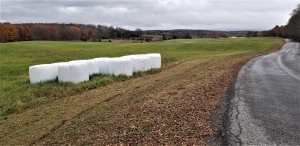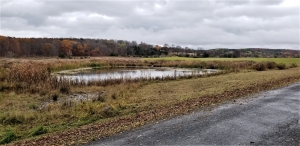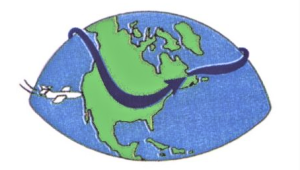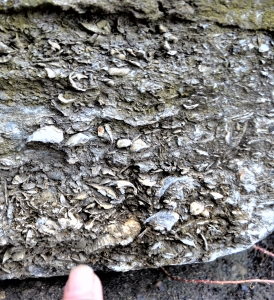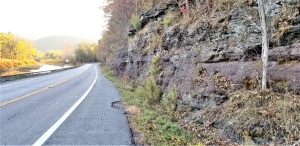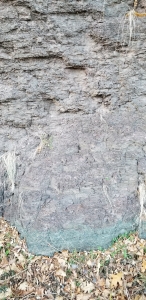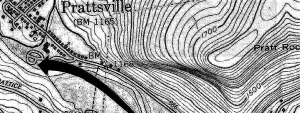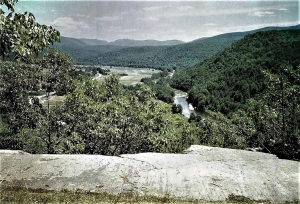A little bit about us. Nov. 11, 2024
A bit about us
The Catskill Geologists; The Mountain Eagle, 2017
Robert and Johanna Titus
Are you, like us, a fan of those murder mysteries you see every week on the local PBS station? We watch them all: Miss Fisher’s Murders, Father Brown, Murders in Paradise: you name them; we watch them. Most people have long wondered how it is that those detectives run into murders as often as they do. Every week, like clockwork, somebody is conveniently murdered right under their noses. It would seem that murderers follow them around, doesn’t it?
Well, that part of it does not bother the two of us very much. You see, our lives are a lot like that. No, we don’t have murderers following us around, but wherever we go there is almost always some gem of a geological story – right there in front of us. There has to be; we write these columns week after week.

Think about it the next few days as you go about your routines. You do the same things we do. You drive down the highway and pass by outcroppings of rock. So do we, except that we often stop, get out and take a look. We know that an outcrop might very well have an interesting story to tell. And, with a little luck – presto – we have a column to publish.
You, like us, are likely to find yourself in some substantial Catskills valley. Our landscapes are full of valleys. Well, it is different for us. Almost any valley, here in the Catskills, was likely to have been filled with a glacier back during the Ice Age. And that is where our imaginations kick in. It’s one thing to see a glacier filling some local valley, but we start imagining it at different times of the day and different stages of the Ice Age. Why just look at a glacier when you can see one during a full moon at midnight. We see the moonlight shining down on the ice and creating a shimmering silver glow. We can always wait until the climate warms up and that glacier starts melting. That’s when raging, forming, pounding thundering torrents of meltwater pass by us – or pass beneath us – or – worst of all – over us!
Each of those outcrops offers a different journey into the past. Here in the Catskills, a lot of them are composed of river sandstones. We stand in front of those, hold out our hands and feel the river currents. We see the fish that lived in those streams. We leave those rivers and climb up their banks. Soon we are wandering through forests that lived here in the Catskills about 380 million years ago. These are as real to us as modern streams and forests are to you.
Other bedrock includes limestones. Those almost always take us back to ancient shallow tropical seas. We have been to today’s Florida and the Bahamas, so we know what kinds of places produce limestones. We see grey bedrock, but we experience aqua-colored waters with colorful seaweeds and animal life.
Those television detectives solve their mysteries week after week and so do we. Our explorations take us to ancient landscapes and even older seascapes, but we cannot truly “experience” them until we have done some detective work. We are scientists and we are writing about our science. All scientists have always been puzzle solvers. Our columns are just special types of puzzles. So, come back next week and read our next column. Try to understand that you are following along as two scientists do their work right here in your Catskills.
Contact the authors at randjtitus@prodigy.net. Join their facebook page “The Catskill Geologist” Or read their blog “thecatskillgeologist.com”

